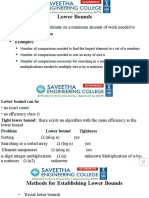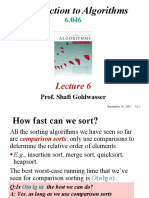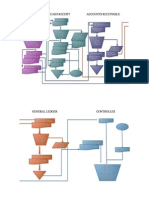0% found this document useful (0 votes)
20 views47 pagesLimitations of Algorithm Power
The document discusses the limitations of algorithm power, focusing on lower-bound arguments, decision trees, and the complexities of P, NP, and NP-complete problems. It explores various methods for establishing lower bounds for algorithm efficiency and highlights the challenges faced in numerical algorithms. Additionally, it addresses the nature of decision problems, including the distinction between tractable and intractable problems, and the implications of NP-completeness in computational complexity.
Uploaded by
323506402323Copyright
© © All Rights Reserved
We take content rights seriously. If you suspect this is your content, claim it here.
Available Formats
Download as PDF, TXT or read online on Scribd
0% found this document useful (0 votes)
20 views47 pagesLimitations of Algorithm Power
The document discusses the limitations of algorithm power, focusing on lower-bound arguments, decision trees, and the complexities of P, NP, and NP-complete problems. It explores various methods for establishing lower bounds for algorithm efficiency and highlights the challenges faced in numerical algorithms. Additionally, it addresses the nature of decision problems, including the distinction between tractable and intractable problems, and the implications of NP-completeness in computational complexity.
Uploaded by
323506402323Copyright
© © All Rights Reserved
We take content rights seriously. If you suspect this is your content, claim it here.
Available Formats
Download as PDF, TXT or read online on Scribd
/ 47





















































































